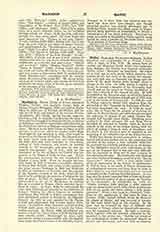

MacMahon, HEBER (EMER or EVER), Bishop of Clogher, Ireland, and patriotic leader, born at Farney, County Monaghan, 1600; executed at Enniskillen in 1650; son of Turlogh MacMahon and his wife Eva O’Neill, and nephew of Sir Patrick MacArt MacMahon. His family, having become impoverished by a bill of attainder confiscating the land of those who had struggled for Ireland‘s liberty withdrew to Killybegs, and Heber received his early education in the Franciscan convent at Donegal, some twenty miles away. He went to the Irish College at Douai in 1617 and later to Louvain, where he studied under Hugh MacCaghwell, was ordained in 1625, after which he returned to the Diocese of Clogher. He labored there for some years with great zeal and fruit among his flock who had been despoiled of their lands, robbed of their churches, and forced to worship secretly in the mountains, and soon he was appointed vicar-general. On February 10, 1642, he was nominated to the See of Down and Connor and was present at the Synod of Kells in that year. Before his consecration, however, he was transferred to Clogher, June 2, 1643. When the struggle for freedom began in 1641 he became a steadfast adherent of Owen Roe O’Neill, and energetically supported the papal envoys, Scarampi in 1643 and Rinuccini in 1645, in opposition to Ormonde and the majority of the Supreme Council of the Irish, whom he believed to be sacrificing the interests of religion for the sake of peace. In 1647 the opponents of Rinuccini endeavored to get rid of MacMahon by sending him on a mission to France, which, however, he refused to accept. In April, 1648, he condemned the truce with Inchiquin as inimical to the Catholics of Ireland. Finding his efforts fruitless he withdrew with Owen Roe O’Neill to Ulster, whereupon they were proclaimed traitors to Ireland by the Supreme Council. In 1649 he was captured by Sir Phelim O’Neill and imprisoned, but escaped shortly afterwards. In October, 1649, Ormonde and Owen Roe O’Neill made peace, the better to resist the Cromwellian invasion. In March, 1650, MacMahon was chosen to lead the Ulster forces, O’Neill having died some months earlier. Encouraged by some early successes he risked a serious conflict with the English army under Sir Charles Coote at Scariffhollis, County Donegal, on June 21, 1650, was defeated and captured two days later near Omagh, and though promised quarter was shortly afterwards put to death by Coote, despite the efforts made by Major-general King, governor of Enniskillen, to obtain a commutation of the death sentence. His head was stuck on a spike at Enniskillen Castle and his trunk buried by some Catholics in Devenish Island, with the permission of Governor King.
A.A. MACERLEAN

